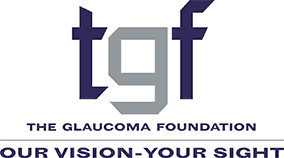
At the June TGF Symposium, a presentation on the genetics of glaucoma was followed by a talk by Pradeep Ramulu, MD, PhD on “Taking Lifestyle into Account.” Dr. Ramulu is chief of glaucoma at the Wilmer Eye Institute at Johns Hopkins in Baltimore.
He asked: “If glaucoma is the third most heritable disease, is there reason to focus on behaviors? We know there is some variability. Are there behaviors that could greatly lower the risks? Could we do better?
Dr. Ramulu described three levels of glaucoma risk. Individuals at very high risk are going to get the disease, he said. People who are sort of in between may or may not get it. And then there is a third group – it doesn’t matter what they do, they are not going to get glaucoma. He compared this group to individuals who eat a cheeseburger every day but don’t get heart disease.
Citing various past studies, Dr. Ramulu looked at whether certain lifestyle behaviors make a difference, using IOP as a measure. He suggested future studies focus on the middle risk group to see if you can change the outcome.
For example, one caffeine study found that while caffeine causes a rise in IOP among people in the higher risk group, it didn’t really seem to matter if you had a low predisposition.
Marijuana use is the lifestyle issue that doctors get asked about all the time, said Dr. Ramulu. The simple answer, he said, is that marijuana use creates a very transient treatment, lasting only around 4 hours.
While that may not convince some to abstain, he cited lots of other reasons. Dosing is not standardized. It’s THC – the primary psychoactive compound in marijuana, that actually lowers the eye pressures, and the actual amount of that you would get in a joint can vary widely.
The dosing you need to lower the IOP is actually the dosing that causes changes, including lowering of blood pressure and psychotropic effects. In other words, he said, you have to be high to lower your pressure.
When people talk about marijuana today, they’re talking about many different forms. A lot of people want to use CBD oil as a substitute but CBD oil, Dr. Ramulu pointed out, has no effect on lowering IOP.
On the other hand, Dr. Ramulu said studies on meditation have been pretty incredible — there is strong evidence for IOP lowering with meditation in glaucoma eyes. When IOP was measured a few hours later, patients had a nice decrease in IOP.
Exercise works too, but you have to keep on doing it to lower IOP. Several studies have pointed to positive systemic changes which is why exercise has been called the polypill. Risks for many diseases go down with exercise.
One study put normal adults through a circuit training program. Using weights that increased their heart rates, they did find that there were changes in perfusion blood flow.
There is also strong evidence that exercise can benefit mitochondrial function in addition to other beneficial changes. Among people with glaucoma, more active people do progress slower, although the effect is rather mild. There is evidence that in animals, exercise really is protective for glaucoma.
Dr. Ramulu thinks it would be helpful if we looked at lifestyle in connection with genetic risks – he thinks we could learn a lot more that way.
